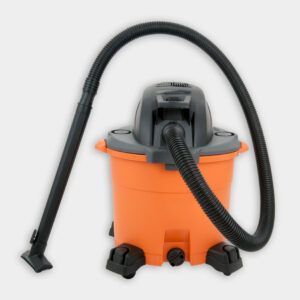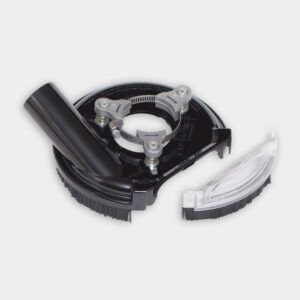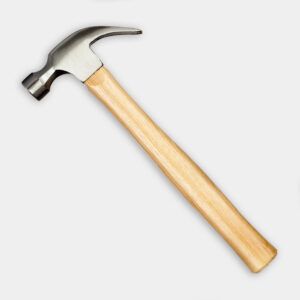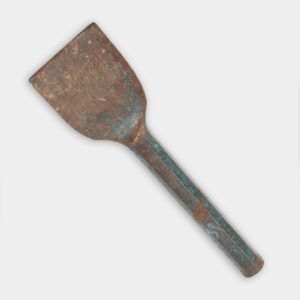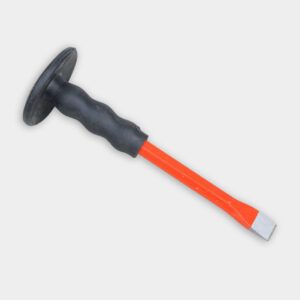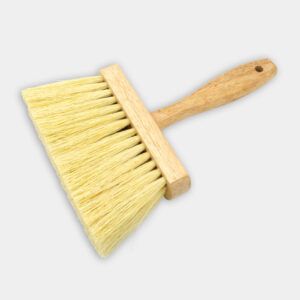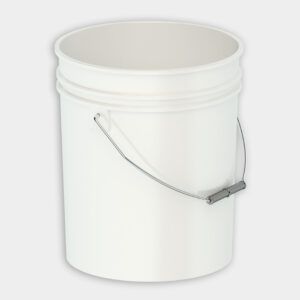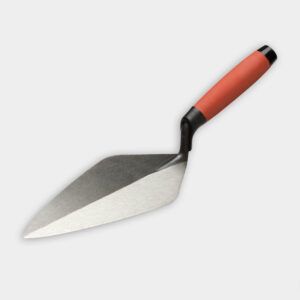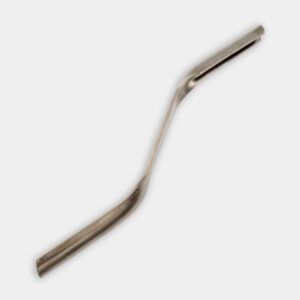We may be compensated if you purchase through links on our website. Our team is committed to delivering honest, objective, and independent reviews on home products and services.
A damaged brick in your fireplace can be an eyesore and potentially compromise the structure’s integrity. Fortunately, repairing or replacing a single brick is a manageable do-it-yourself (DIY) project for many homeowners. In this guide, we’ll walk you through the process of fixing a chipped or damaged brick in your fireplace, demonstrated in the video above by skilled This Old House mason Mark McCullough.
Assessing Fireplace Brick Damage
Before starting any repair work, assess the damage to your fireplace brick to determine whether you need a simple repair or a complete replacement.
Types of Brick Damage
Fireplace bricks can suffer from various types of damage, each requiring different approaches:
- Chipping: Notice any small pieces of brick breaking off, often due to impact or wear.
- Cracking: Look for visible fractures that can compromise the brick’s integrity.
- Crumbling: Check for deterioration and disintegration of the brick material.
- Spalling: Evaluate whether the outer layer of the brick flakes or peels off.
Determining Repair vs. Replacement
Minor chips or superficial cracks in fireplace bricks can often be repaired using specialized masonry fillers or patching compounds. However, if the brick is severely damaged, crumbling, or compromising the fireplace’s structural integrity, replacement is usually the best course of action.
Tools and Materials Needed for Fireplace Brick Repair
To repair or replace a damaged fireplace brick, you’ll need these items:
- 5-gallon bucket for mixing mortar
- Brick trowel for application
- Canvas drop cloth to catch debris
- Chisel and masonry chisel for detailed work
- HEPA vacuum for dust extraction
- Hammer for chipping away mortar
- Masonry brush for cleaning
- Masonry jointer for shaping
- Painters’ tape for masking
- Plastic drop cloths to protect the area
- Power grinder with dust attachment for precise cuts
- Replacement bricks, if needed
- Tuck pointer for finishing joints
- Type N mortar for bonding
Prioritize safety when working with tools and masonry dust.
- Ensure the work area is well-ventilated by opening windows or using fans.
- Hang plastic tarps to contain dust.
- Use dust-collecting tools to reduce breathing in airborne particles.
- Wear safety goggles, a dust mask, and work gloves.
Removing the Damaged Fireplace Brick
The first step in repairing your fireplace is to carefully remove the damaged brick without disturbing the surrounding masonry. This delicate task requires attention to detail and the right tools.
Cutting Out the Damaged Brick
- Use a power grinder to cut along the inside of the bed joints that surround the damaged brick.
- Make cuts carefully just inside the joints to avoid damaging adjacent bricks.
- Use dust-collection tools to minimize airborne dust during the cutting process.
Chiseling Out the Brick
- With a hammer and chisel, remove the mortar from the head joints of the brick.
- Carefully chip away at the brick, breaking it into smaller pieces for easier removal.
- Target key areas of the brick for removal, taking care not to damage surrounding masonry.
Preparing the Opening for New Fireplace Materials
After removing the damaged brick, prepare the opening for the new brick or repair material. A clean and well-prepared site ensures effective bonding.
Cleaning the Opening
- Use a dampened masonry brush to clean out the hole left by the old brick.
- Remove any loose mortar and debris to create a pristine surface for new mortar.
- Lightly mist the area with water to prevent the surrounding bricks from rapidly absorbing moisture from the new mortar.
Mixing the Mortar
In a 5-gallon bucket, mix Type N mortar with water until reaching an oatmeal-like consistency that is neither too wet nor too dry. Prepare only as much mortar as you can use within about 30 minutes to prevent it from setting prematurely.
Installing the New Fireplace Brick
Be precise as you work with the mortar and bricks.
Applying Mortar
- Use a trowel to apply a layer of mortar to the base of the opening where the new brick will be placed.
- Spread mortar on the sides and back of the replacement brick in a technique known as back buttering.
- Ensure all surfaces are well-coated to create a strong bond with the existing structure.
Setting the Brick
- Carefully place the new brick into the opening, gently wiggling it to establish good contact with the mortar.
- Check with a level to ensure the brick sits flush with the surrounding masonry.
- Clean off any excess mortar that squeezes out from the joints to maintain a neat appearance.
Filling the Joints
- Use a tuck pointer to push mortar deep into the joints surrounding the new brick.
- Fill the joints completely, ensuring the mortar forms a strong bond.
- Use a jointing tool that matches the profile of existing joints for a consistent look.
Finishing Touches of Fireplace Repair
The final steps in your brick repair process ensure the new work blends seamlessly with the existing fireplace surround.
Cleaning Up
Allow the mortar to set for approximately 30 minutes. Use a damp sponge to carefully clean any mortar smears from the brick face, avoiding water in the fresh joints.
Matching the Appearance
If you’re repairing a small area rather than replacing an entire brick, match the new work with the old.
- Mix mortar with brick dust to blend the color with the surrounding bricks.
- Apply the colored mortar to the repaired area using a small brush or trowel for precision.
- Texture the mortar surface to match the adjoining bricks while still pliable.
Curing the Mortar
- Allow the repaired area to cure for at least 24 hours before using the fireplace.
- Keep the area slightly damp during this period to prevent the mortar from drying too quickly and developing cracks.
- Avoid exposure to extreme temperatures during the curing process to ensure durability
